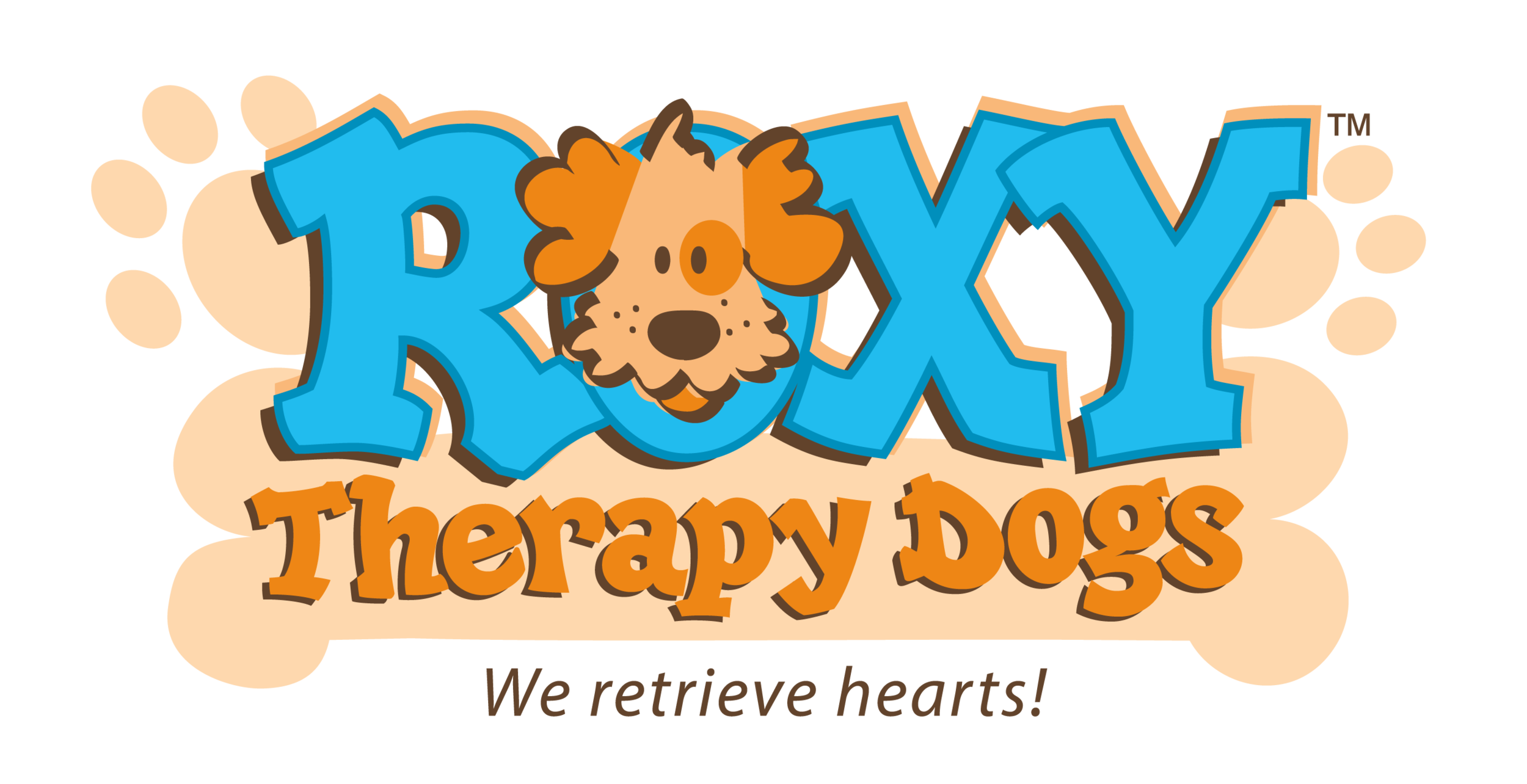Service, Therapy, and Emotional Support Dogs: What’s the Difference?
When Roxy™ Therapy Dogs volunteers are out and about, the community often refers to the dogs as “service” dogs.
But Roxy ™dogs aren’t “service” dogs. They are “therapy” dogs. There’s a difference. Let us explain. We’ll start with the highest-trained dogs and work our way down.
Service Dogs
Service dogs are highly trained to be of assistance to one human being.
According to the ADA (Americans with Disabilities Act), “A service animal means any dog that is individually trained to do work or perform tasks for the benefit of an individual with a disability, including a physical, sensory, psychiatric, intellectual, or other mental disability. Tasks performed can include, among other things, pulling a wheelchair, retrieving dropped items, alerting a person to a sound, reminding a person to take medication, or pressing an elevator button.” A guide dog for the blind is a classic example of a service dog.
Service dogs are highly trained to be of assistance to one human being. These dogs are bred to have the right temperament for the job and are put through months of exhaustive training with skilled professional trainers to get them ready to work. Some don’t make the cut for several reasons, but if they graduate, the dog usually spends their entire lifetime serving their human.
In accordance with the ADA, service dogs can go anywhere their human goes including restaurants, grocery stores, airplanes (in the passenger compartment), etc. They must be allowed in all housing, even if pets are not allowed.
Did you know? You should never pet a service dog when it's working.
Therapy Dogs
Therapy dogs go through training to provide comfort and support for many individuals who can benefit from their presence.
Tucker is hard at work comforting this group of children.
The team may have received their “Canine Good Citizen” (CGC) certification but must have passed a therapy dog certification test by a nationally accredited organization such as Bright and Beautiful Therapy Dogs or Alliance of Therapy Dogs. (These two organizations are approved by Roxy Therapy Dogs, but there are many others including the rigorous Pet Partners organization. Note that RTD requires the CGC, whereas some organizations do not.)
Therapy dogs must have a calm demeanor, enjoy interacting with humans, and can tolerate a great deal of handling, noise, and different environments. Therapy dogs interact with many people, not just one, in many situations such as schools, hospitals, nursing homes, etc. Therapy dogs go home with their owners at the end of the day and are like other family pets when they are off duty.
Dogs can become certified to become a therapy dog at almost any age over 12 months. Many take special classes to be ready for the test—but some don’t and pass with flying colors anyway. This is a sample of the Bright and Beautiful test. Others vary to some degree.
Did you know? Other species can become certified therapy animals including rabbits, mini-horses, cats, miniature pigs, donkeys, guinea pigs, and more!
Emotional Support Animals
In response to the 1990 signing of the Americans with Disabilities Act, support for animals for people with disabilities became law. Because the definition of Emotional Support Animals (ESA) came into the public conscience when the airlines determined they could fly with their owners in the passenger compartment for free and out of a carrier if the owner had a signed statement from a medical professional certifying that this one person needs this one dog/snake/bunny, etc to be able to retain their emotional balance. No testing or training would be required for these animals. This was around 2008.
As you might imagine, this resulted in some crazy abuses of ESA status, the pinnacle of which was when a person tried to bring a peacock on a plane.
In late 2020, the U.S. Department of Transportation handled this problem and ruled that ESAs will no longer be allowed in the passenger compartment of a plane.
Regarding ESA’s permissions in general, they do not have public access rights and are only allowed in public places that also allow pets.
Volunteer for Us!
Now that you know the difference between service, therapy, and emotional support animals, would you like to join Roxy with your therapy dog and bring support and comfort to area children? Here’s where you start.
We also need volunteers who don’t have a dog but would share their time with us. Tell us how you’d like to volunteer your skills.






